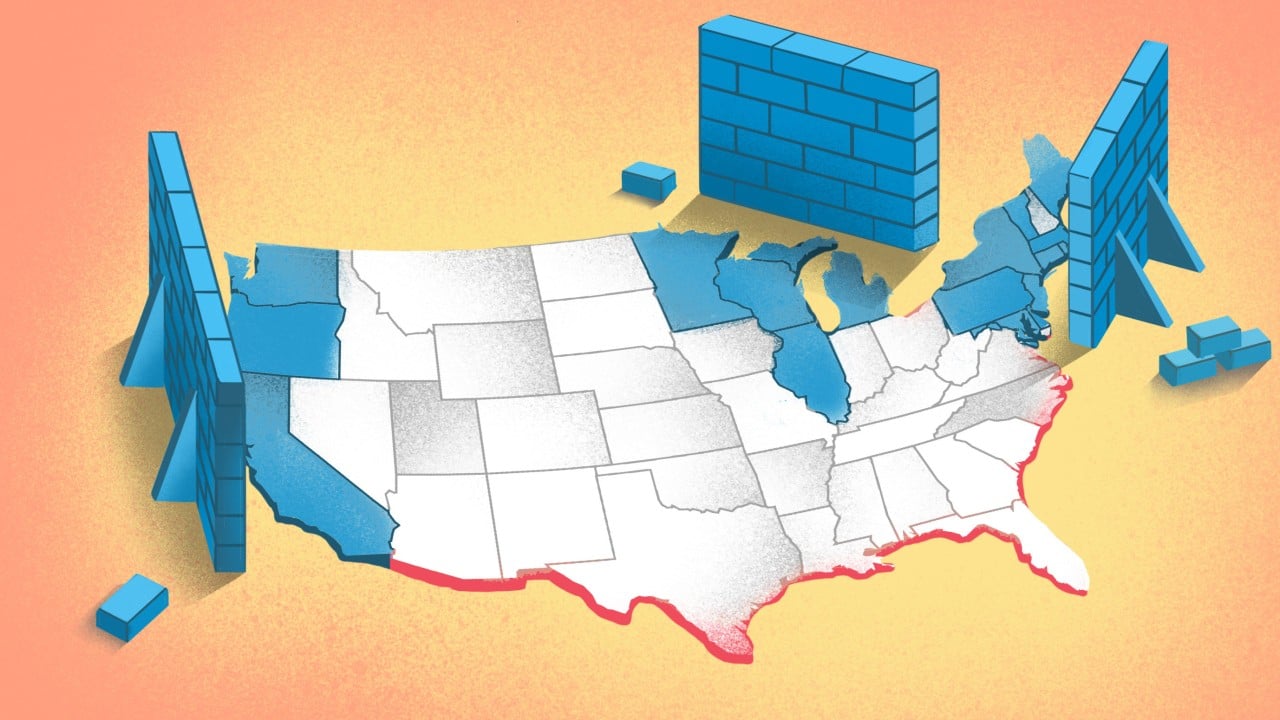America’s 2024 general election has many quirks like divergent voting processes, the outsize influence of “swing states” and uncertainties about how congressional results will affect the next president’s ability to govern. In the last of a four-part series, the South China Morning Post looks at the much-vaunted Blue Wall: what it is, what it means and why it’s important.
Advertisement
With mere days to go until the US presidential election on Tuesday, millions worldwide are trying to navigate the sometimes confusing campaign terminology used by political media.
One phrase is the Blue Wall – what is it, exactly? How can it determine whether the Republican Party nominee, former president Donald Trump, or the Democratic Party nominee, US Vice-President Kamala Harris, takes the White House?
In a presidential election, a candidate must secure at least 270 of 538 Electoral College votes. Each state is allocated electors based on its number of US representatives and senators, and a state’s electoral college votes go to the candidate who wins that state’s popular vote.
Most of the 50 states have established voting patterns that lean either Republican or Democratic. Since 1992, 18 states – many located on the east and west coasts of the country – and the District of Columbia have consistently supported the Democratic candidate, a so-called Blue Wall.
Advertisement
All told, they represent 238 electoral college votes, with California and New York contributing the largest number, respectively 54 and 28 votes.
Republican have similar strongholds: most of the country’s southern and interior states. But aside from Texas and Florida – 40 and 30 electoral college votes, respectively – these states are less populated, and thus carry fewer electoral votes. All told, solidly Republican states carry 218 electoral college votes.

